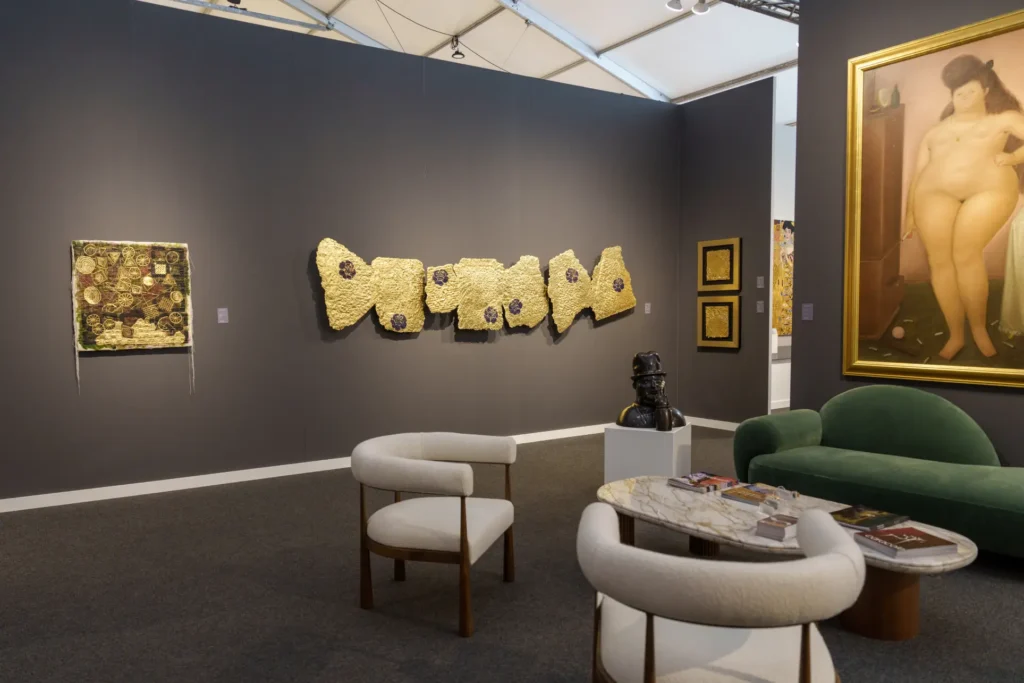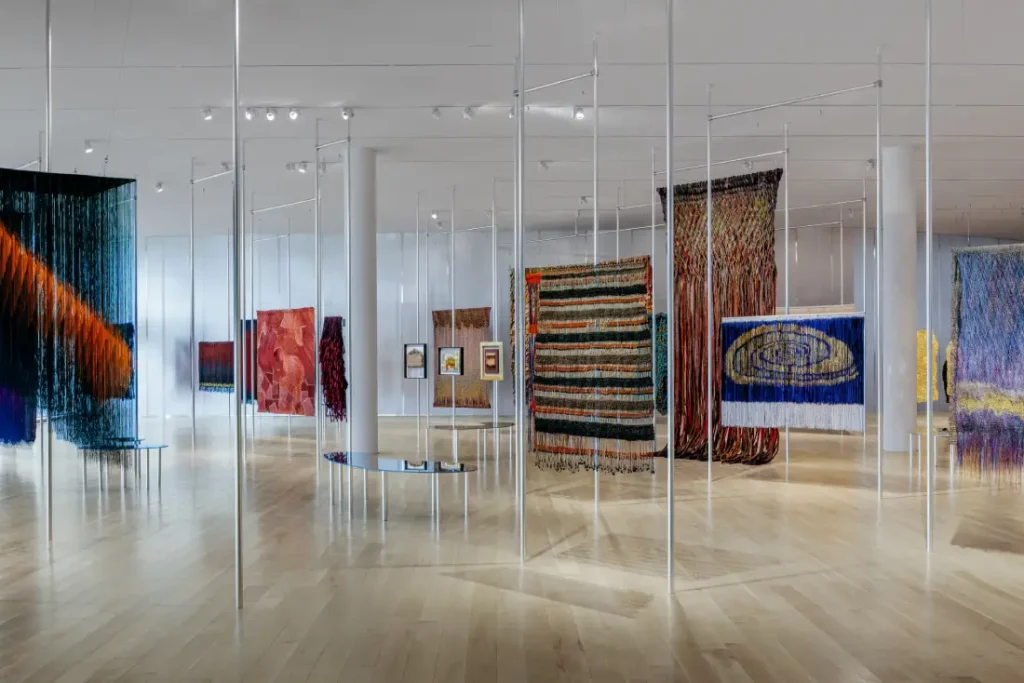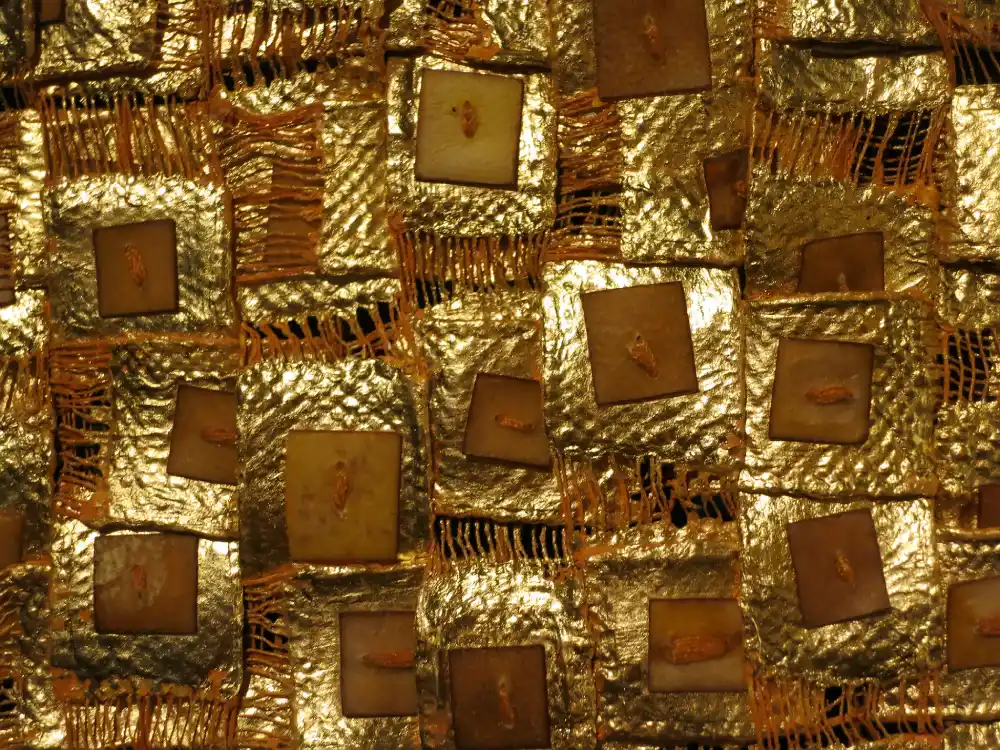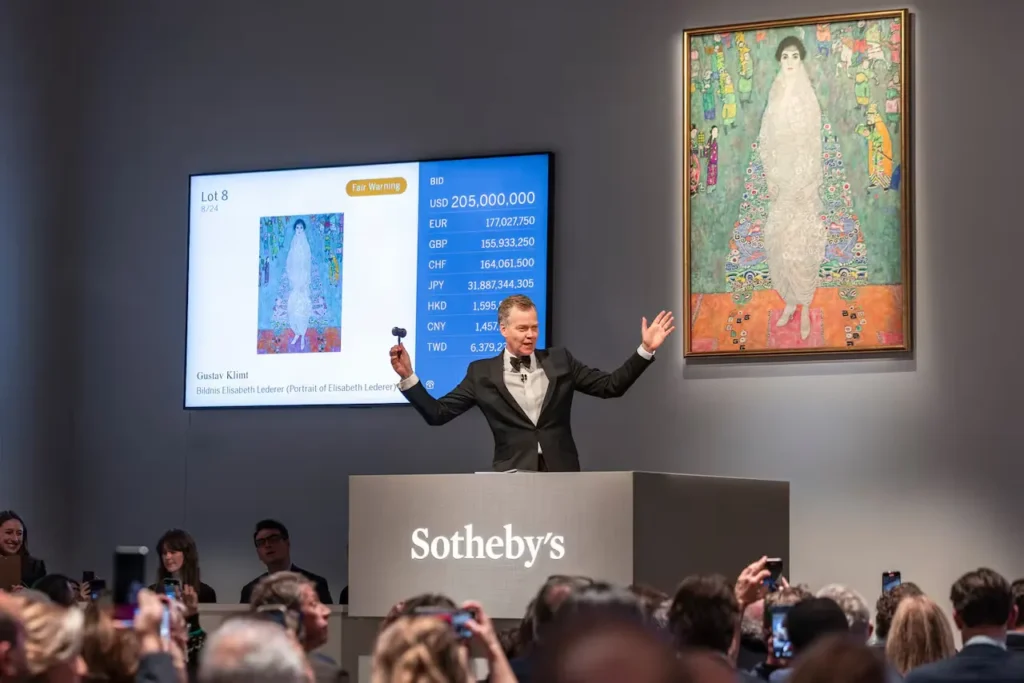A new era for textile art
Textile art is experiencing a renaissance. Once underestimated and confined to the category of craft, it is now thriving in major museums, galleries, and contemporary art collections worldwide. Characterized by intricate materiality and profound cultural storytelling, textile art is one of the most dynamic art forms of the 21st century.
This resurgence is driven by artists who are pushing the boundaries of fiber, weaving, and surface manipulation—none more important than Olga de Amaral, the Colombian artist whose innovative textile-based work has redefined what fiber art can be.
From craft to fine art: The rise of textile art
Textile-based practices have existed for thousands of years, often rooted in functional or ritualistic traditions. Today, however, artists are transforming textiles into conceptual, sculptural, and highly collectible artworks.
Contemporary textile art challenges the binary between art and craft, it offers an expansive, sensory experience: the tactility of fabric, the shimmer of metallic leaf, the repetition of weaving as meditation. Artists use these properties to comment on themes ranging from gender and politics to spiritual traditions and indigenous culture.
Olga de Amaral: A pioneer in modern textile art
At the forefront of this movement is Olga de Amaral, a globally renowned artist whose woven works have transcended the traditional loom. Born in Bogotá in 1932, de Amaral studied textile art at Cranbrook Academy of Art in Michigan before returning to Colombia, where she developed her distinctive visual language.
Her practice combines fiber, gesso, paint, and gold or silver leaf, creating luminous works that evoke the sacred, the symbolic, and the architectural.

Olga de Amaral’s textiles are not mere surfaces—they become environments, sculptures, and icons. They reflect Colombia’s pre-Hispanic heritage while exploring universal concepts such as space, memory, and transcendence.
Olga de Amaral does not consider herself a textile artist in the traditional sense. Her artworks belong as much to painting and sculpture as to fiber art. This fluidity is precisely what has made her one of the most respected and celebrated voices in worldwide contemporary art today.
Textile art in the contemporary market
The contemporary art market has opened its eyes to the value of textile art. Collectors, curators, and institutions are now recognizing the technical complexity, historical depth, and emotional power of woven and fiber-based works.
Auction results for textile pieces have steadily increased, and artists working in fiber are now represented by top-tier galleries around the world. This is a moment of validation and visibility for the medium—and for collectors, an opportunity to invest in a field that combines innovation with legacy.
Acquiring a piece by Olga de Amaral means holding a work that embodies more than six decades of artistic evolution. It also means joining the growing number of collectors who see textile art not as decorative but as intellectually and materially rich.

Exhibiting greatness: Olga de Amaral around the world
Olga de Amaral’s artworks have been showcased in some of the most prestigious art institutions globally. Her solo exhibitions include:
- “Olga de Amaral: To Weave a Rock” at the Cleveland Museum of Art and the Museum of Fine Arts, Houston, which traced her artistic journey over five decades.
- Fondation Cartier pour l’art contemporain in Paris, 2024
- Institute of Contemporary art in Miami, 2025
- Inclusion in landmark group exhibitions like the Venice Biennale and the Bienal de São Paulo.
See a longer list and more detail information about Olga de Amaral’s exhibitions here.

The Role of culture and identity
A defining characteristic of Olga de Amaral’s textile work is its deep cultural symbolism. Her use of gold, for example, references Colombia’s pre-Columbian cultures, where the material was sacred. The repetitive processes of weaving and layering speak to memory and ritual, echoing traditions passed down through generations.
Her work bridges multiple worlds: the ancient and the contemporary, the sacred and the material, the personal and the universal. This makes her textiles compelling to global audiences—especially in the United States, where art lovers are increasingly drawn to voices that reflect cultural authenticity and mastery of technique.
Why collect textile art now?
In today’s contemporary art market, textile art is a cultural statement and a strategic acquisition. Collectors are turning their attention to fiber-based works for their innovation, rarity, and the increasing recognition of the medium’s value.
Artworks by Olga de Amaral are particularly sought after because of her singular position at the intersection of textile tradition, sculptural form, and contemporary vision. Her meticulous process, use of gold leaf, and rich visual language make each piece timeless.
For new and seasoned collectors alike, textile art offers an entry point into a genre that is both rooted in human history and alive with future possibilities.



